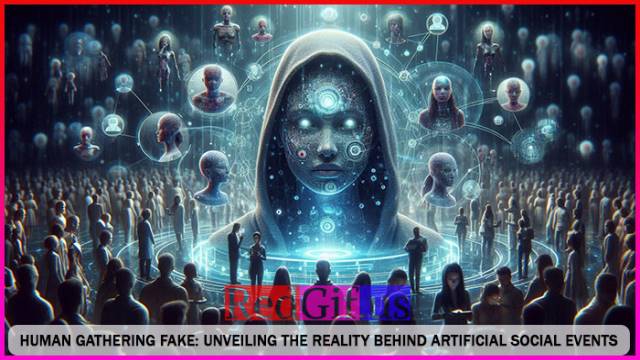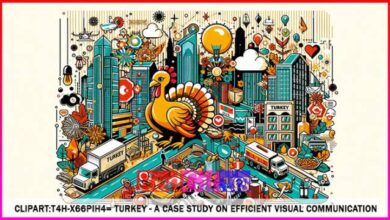Human Gathering Fake: Unveiling the Reality Behind Artificial Social Events

Problem: Human Gathering Fake
In this digital age, human authenticity is under attack. With social media, deepfakes and AI generated content, the concept of “human gathering fake” has become a real trend. These are events or gatherings that look real but are staged with an ulterior motive, often to deceive or manipulate public opinion.
Imagine attending an event that looks normal only to find out later that many of the people there were not real or the entire event was staged for a hidden agenda. This is not just a theoretical problem; it’s happening more often than you think. The problem goes beyond individual deception and touches on bigger societal implications, trust, security and erosion of real human connections.
Agitation: Human Gathering Fake
Human gathering fakes have big implications. One of the most scary is the erosion of trust. When people find out an event they attended was fake, their trust in similar events, organizations or even themselves is shaken. This can lead to social isolation, cynicism and general distrust of public events.
For example in 2020, a case study revealed a series of fake protests organized in several major cities around the world. These events were promoted on social media to create chaos and confusion. Many of the participants were paid actors or AI generated avatars, creating the illusion of widespread support for certain causes. The real attendees, unaware of the deception, were convinced they were part of a real movement.
This is not just unethical; it can be harmful. Fake gatherings can be used to incite violence, spread misinformation or even disrupt democratic processes. The harm potential is big and as these practices get more sophisticated, the line between reality and fabrication gets thinner.
Also these events often exploit the weaknesses of social media algorithms which prioritize content that gets high engagement. By creating fake gatherings that get buzz, organizers can manipulate public opinion and shape opinions on a massive scale. The consequences are huge as they create a culture of misinformation and confusion.
Solution: Human Gathering Fake
So what can we do to stop human gathering fakes? The answer is a combination of technological innovation, public awareness and regulatory oversight.
Technological Innovation
AI and machine learning can be used to detect and flag suspicious activity. For example, tools that analyze social media activity can identify patterns of fake gatherings such as sudden spikes of activity from non-human accounts. By using these tools, platforms can proactively stop the spread of fake events.
Public Awareness
Education is key. The public needs to be aware of human gathering fakes and their dangers. This means teaching people how to spot a fake event such as inconsistencies in attendee behavior or AI generated content. By arming individuals with the knowledge to identify fake gatherings we can reduce their impact.
Regulatory Oversight
Governments and regulatory bodies need to step in. This could mean implementing stricter regulations on social media platforms, requiring transparency in event promotion and holding those who create fake gatherings accountable. By having clear rules and consequences we can stop bad actors from doing this.
One example of this in action is the European Union which has introduced regulations that require social media platforms to disclose the source of event promotion and advertising. This has helped reduce the number of fake gatherings as organisers can’t hide behind anonymity.
Another is to encourage the development of decentralised social networks where content is verified through blockchain. These platforms can be a more secure space where fake gatherings can’t be promoted.
And all of this needs to be done together. Tech companies, governments and civil society. Together.
Case Study: 2020 Fake Protests
Let’s go back to the 2020 case study I mentioned earlier. This was a series of protests that were organized online and took place in cities like New York, London and Paris. They were covered by the media and had thousands of participants online and in person.
But investigations later found out that the protests were orchestrated by a political group. Many of the online organizers were fake accounts and some of the on the ground participants were paid to attend. The goal was to create the illusion of a big, grassroots movement to shape public opinion on an issue.
The aftermath was huge. Trust in the media and social media platforms was further broken and real activists felt stabbed in the back. The event showed us the need to scrutinize online event promotions and the dangers of human gathering fakes.
This case also emphasizes the importance of media literacy. If more people knew the tactics used to create fake gatherings, they would have questioned the events before attending. The case study is a wake up call for us in this digital age.
Summary
Human gathering fakes is a growing threat in our connected world. As technology advances, so do those who want to deceive and manipulate through fake events. The impact is far reaching, trust, security and society itself.
But we can counter this trend by using technology, raising public awareness and regulations. The solutions are available, we just need to act together.
In the end, the fight against human gathering fakes is a fight for the truth. By being aware and informed we can make sure our social interactions are real and the power of human connection isn’t exploited by those who want to.
FAQs
What is a human gathering fake?
A human gathering fake is an event or social gathering that looks real but is orchestrated to deceive or manipulate public opinion. These events often have fake participants or are staged for hidden agendas.
How can I spot a fake gathering?
Signs of a fake gathering include inconsistent attendee behavior, AI generated content, sudden surge of non human social media activity and lack of transparency about the event organizers.
How to prevent human gathering fakes?
Human gathering fakes can be prevented by technology to detect suspicious events, public awareness to spot the signs of a fake gathering and regulations to hold organizers accountable and transparent.




